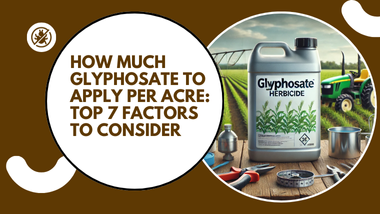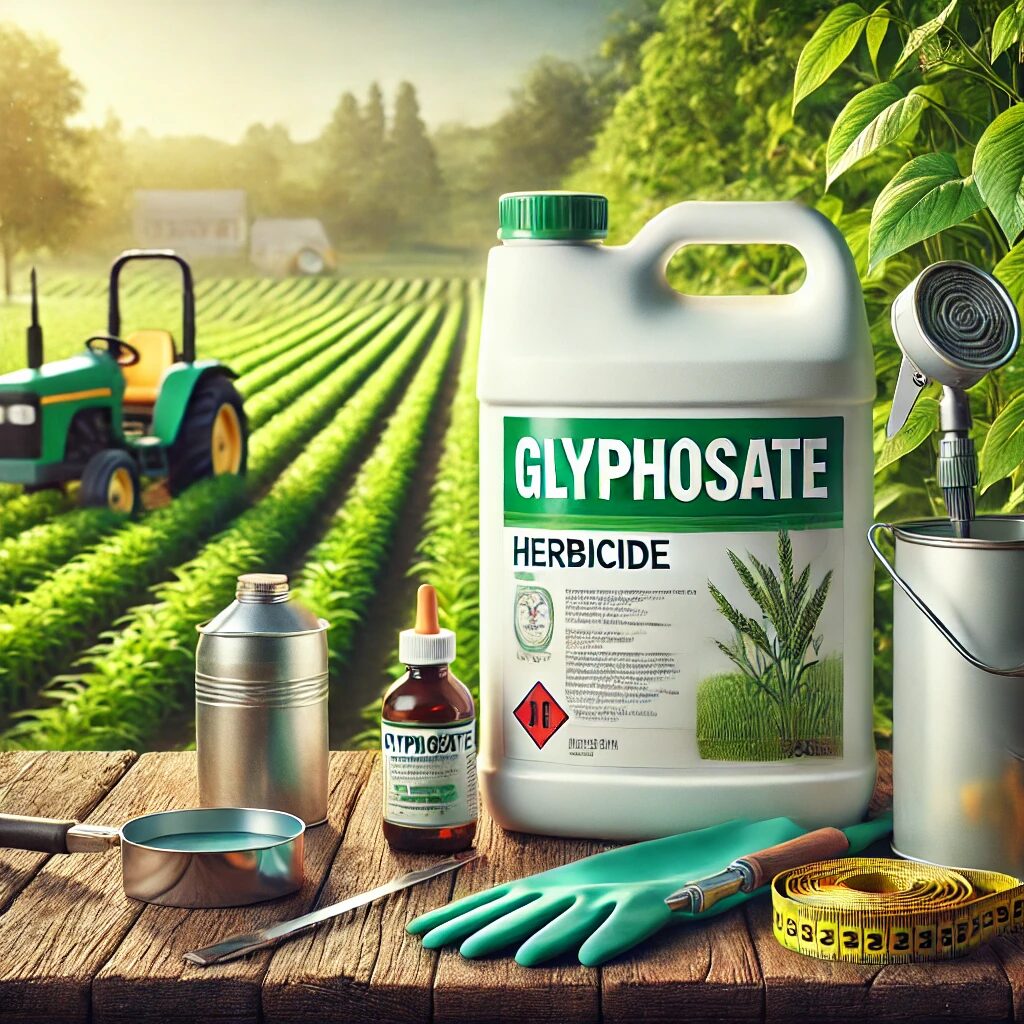
How much glyphosate to apply per acre can make or break your crop’s success. The right amount ensures effective weed control and healthy plants. Using too much or too little can lead to poor results.
Knowing how much glyphosate to apply per acre is essential for achieving optimal results in your farming practices.
In this article, we’ll explore the top seven factors that influence how much glyphosate you should use.
Stick with us until the end, and you’ll discover practical tips and insights that will empower you to maximize your yields while safeguarding your investment!
1. The Type of Weed Require How Much Glyphosate to Apply Per Acre

When it comes to applying herbicides like glyphosate, understanding the type of weed you’re trying to kill and how much glyphosate to apply per acre is fundamental. Weeds vary widely in their resistance to herbicides, with some being harder to kill than others.
For example, clover and thistles often need a stronger application rate due to their resilience. The formulation of your glyphosate product, as well as the active ingredient concentration, plays a key role in effectively controlling these more stubborn weeds.
For those targeting broadleaf weeds or grasses in a hay field, consider both the type and the specific growth stage of the weed.
Early-stage weeds may be controlled with lower concentrations, while mature, resistant weeds might require you to apply a quart of glyphosate per acre, or even more. This differentiation ensures you’re not using excess herbicide, which could result in residual effects that harm the surrounding plants.
Always read the label carefully, as each product is different. Labels provide vital information on the correct rate per acre, depending on whether you’re dealing with a generic formulation or a specific brand like Roundup.
2. How Much Glyphosate to Apply Per Acre: Concentration Per Gallon of Water
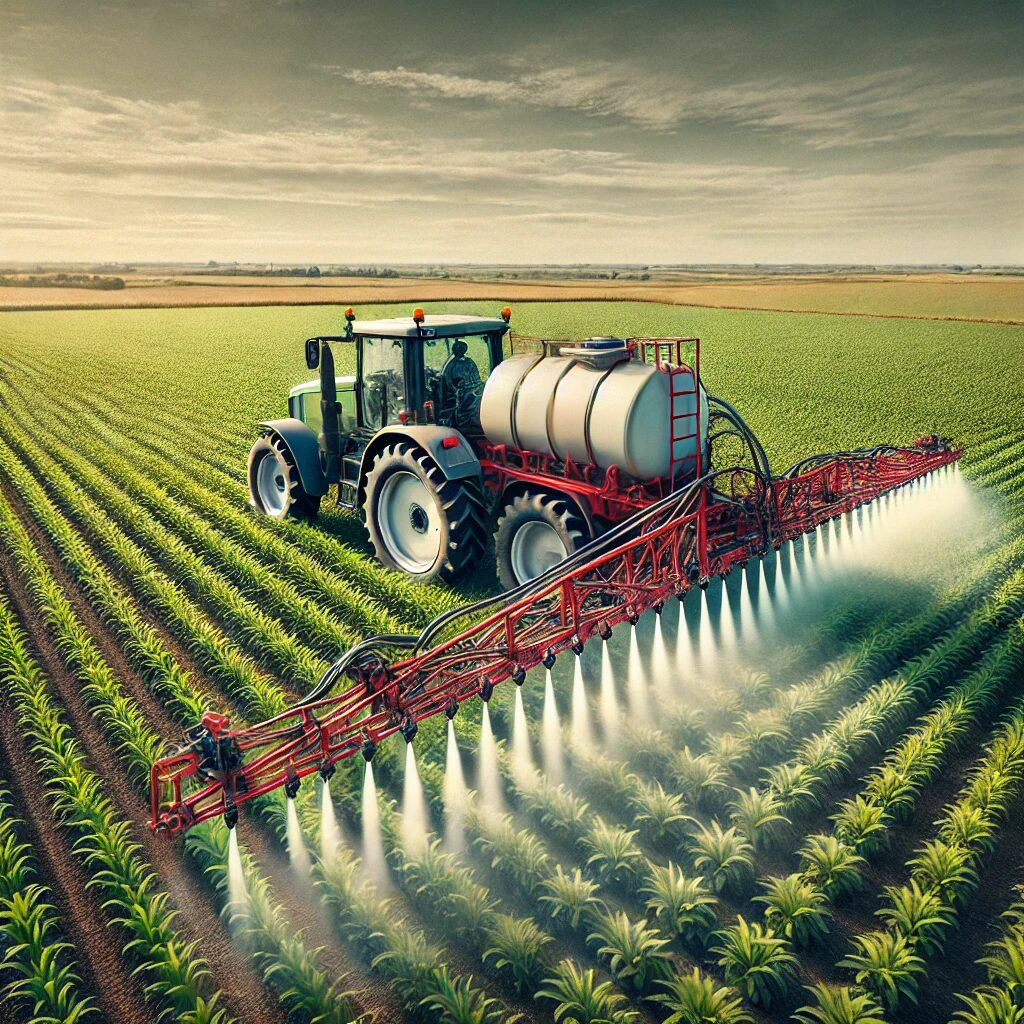
The concentration of glyphosate per gallon of water is essential for managing herbicide effectiveness. Generally, 2 ounces of glyphosate per gallon is recommended for most weed control situations. However, this can vary based on the severity of the infestation and the hardiness of the weed.
For tough cases, such as those involving resistant weeds, you might increase the concentration to as much as 4 oz per gallon.
Mixing the right glyphosate amount is crucial not only for killing weeds effectively but also for preventing damage to surrounding plants.
If you’re working with hard water, note that some formulations might need to be adjusted, as hard water can reduce the efficacy of glyphosate. In cases where hard water is involved, some users add a surfactant or other additives to the mix to improve absorption.
For larger areas, knowing how many gallons per acre you will use can help in determining the overall herbicide requirement. If you’re using a 2.5-gallon jug of glyphosate, for instance, you need to calculate how many acres this will cover based on your rate per acre.
This step ensures you have enough herbicide on hand for the job, reducing the risk of running out mid-application. Check out resources like the EPA’s Glyphosate Fact Sheet for more comprehensive guidelines.
3. Gallon Tank Capacity and Mixing
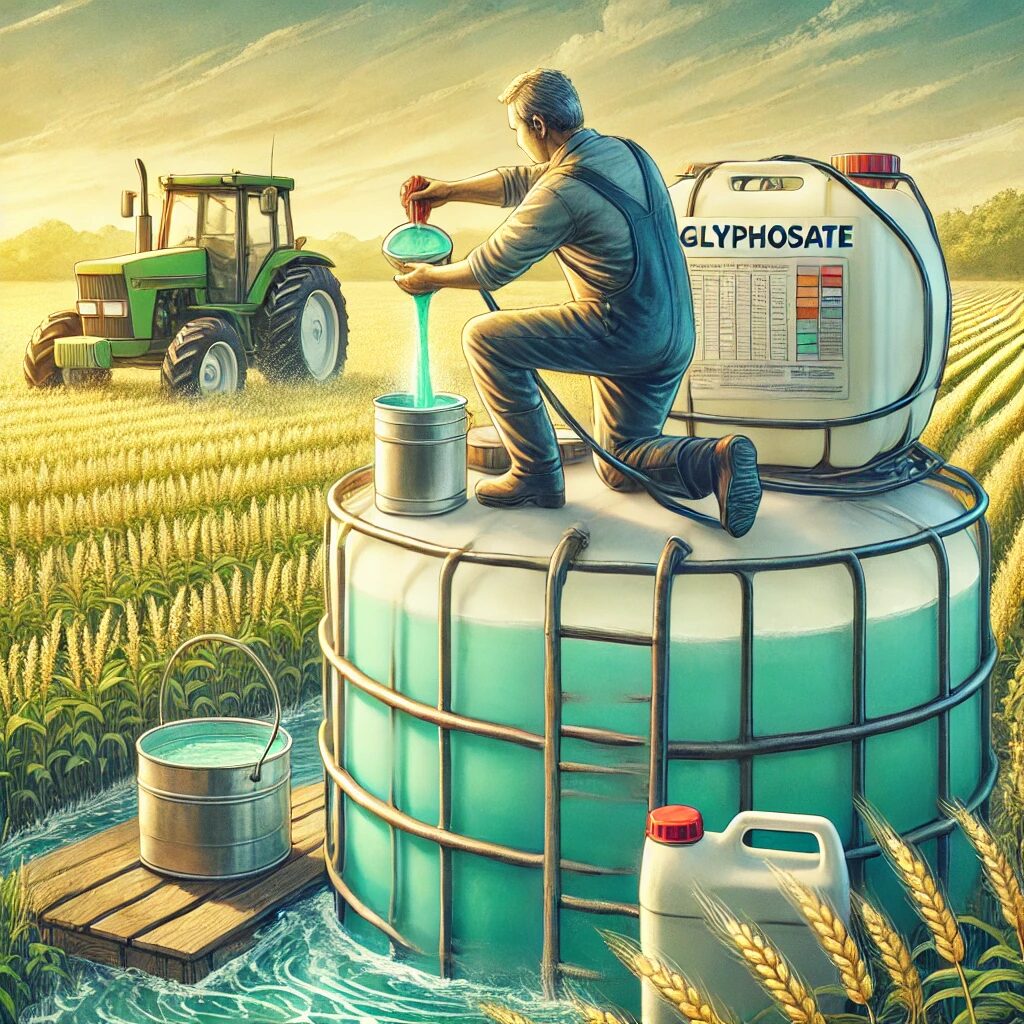
Your sprayer’s tank capacity significantly affects how much mixture you can prepare at one time, which in turn influences your efficiency and effectiveness.
A tank that holds 1 gallon might be suitable for small, spot spraying jobs, while a 25-gallon tank is ideal for covering larger areas, like a field or pasture. For instance, if you’re using a 5-gallon tank, mixing proportions should account for this volume.
To effectively cover an acre, you need to consider the spray solution rate. Some users apply about 20 gallons of water per acre, depending on the tank size and the weeds they aim to control.
This often requires precise calibration, as you don’t want to exceed the correct rate per acre, which might be specified on the herbicide label.
For example, if you have a 25-gallon tank and plan to use 2 ounces of glyphosate per gallon, ensure that you mix it thoroughly to maintain uniform concentration throughout the tank.
With proper mixing, the entire tank should deliver consistent amounts of herbicide, ensuring that all treated areas receive the same application rate.
4. Timing and Environmental Conditions
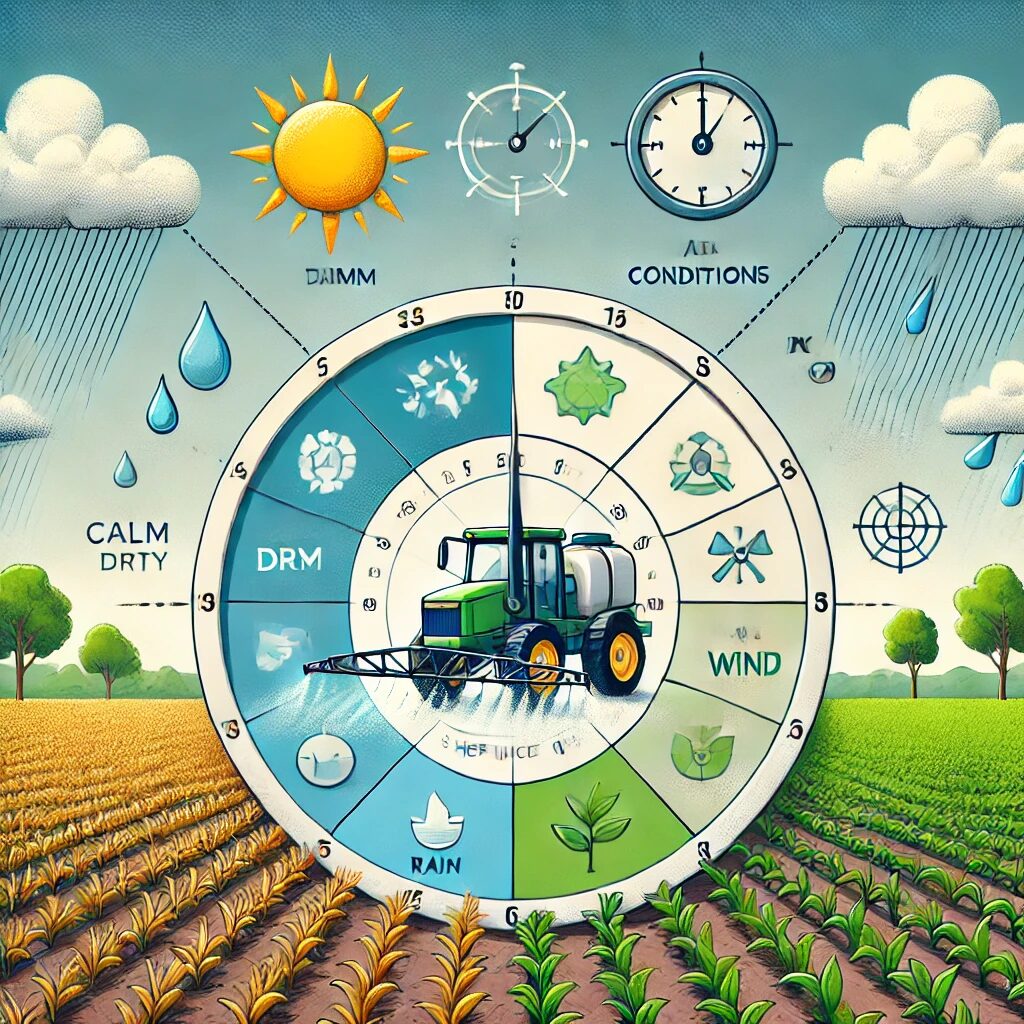
Timing is crucial when using glyphosate to kill weeds, as environmental factors like wind, rain, and temperature can impact effectiveness.
If you plan to spray solution during windy conditions, it can cause drift, which may lead to unintended damage to nearby plants or reduced effectiveness on the target area. Applying glyphosate on a calm day and how much glyphosate to apply per acre ensures that more of the herbicide lands where it’s needed.
Furthermore, applying before rain can wash away the glyphosate before it has a chance to work. It’s recommended to spray when conditions are rain fast, ideally allowing 24 hours without rain.
This is particularly important if you’re aiming to kill resistant weeds or if you’re working with a larger tank, like a 25-gallon one, which covers more ground and may require more precise timing.
Temperature also plays a significant role. For optimal results, glyphosate should be applied when temperatures are between 60°F and 85°F.
This range supports better absorption, maximizing the residual effect on hard-to-kill weeds. In some cases, applying in lower or higher temperatures may require adjustments to the application rate or the active ingredient concentration.
5. Equipment and Application Method
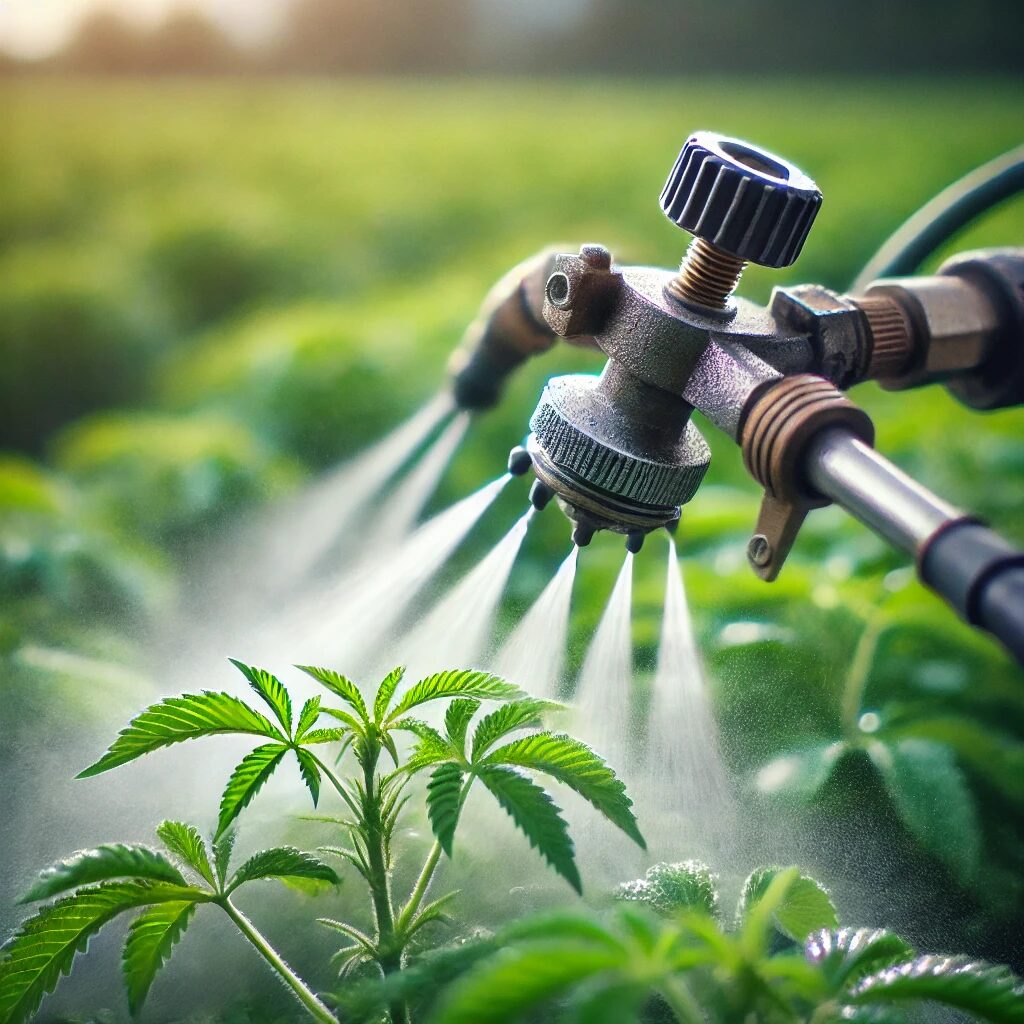
The type of equipment you use can make a big difference in how effective your herbicide application is. If you’re dealing with a larger plot, a tractor-mounted sprayer with a 25-gallon capacity will allow you to cover more ground quickly. For smaller areas or for spot spraying, a 1- or 2-gallon handheld sprayer may be more appropriate.
Calibrating your sprayer is essential to ensure even coverage. This includes adjusting the spray nozzle to deliver the correct amount per acre, typically about 2.5 gallons per acre.
Equipment such as an ATV-mounted sprayer can help cover larger areas and navigate difficult terrain, while a backpack sprayer might be suited for smaller, targeted applications.
When using a nozzle like the flat fan nozzle, which is ideal for herbicides, it’s important to check that your equipment is functioning correctly.
Proper calibration means adjusting your nozzle and pressure to minimize drift and maximize coverage. A disc nozzle may be useful for larger droplets if you’re spraying in windy conditions, as this can reduce drift.
6. Soil Type and Its Influence on Glyphosate Efficacy
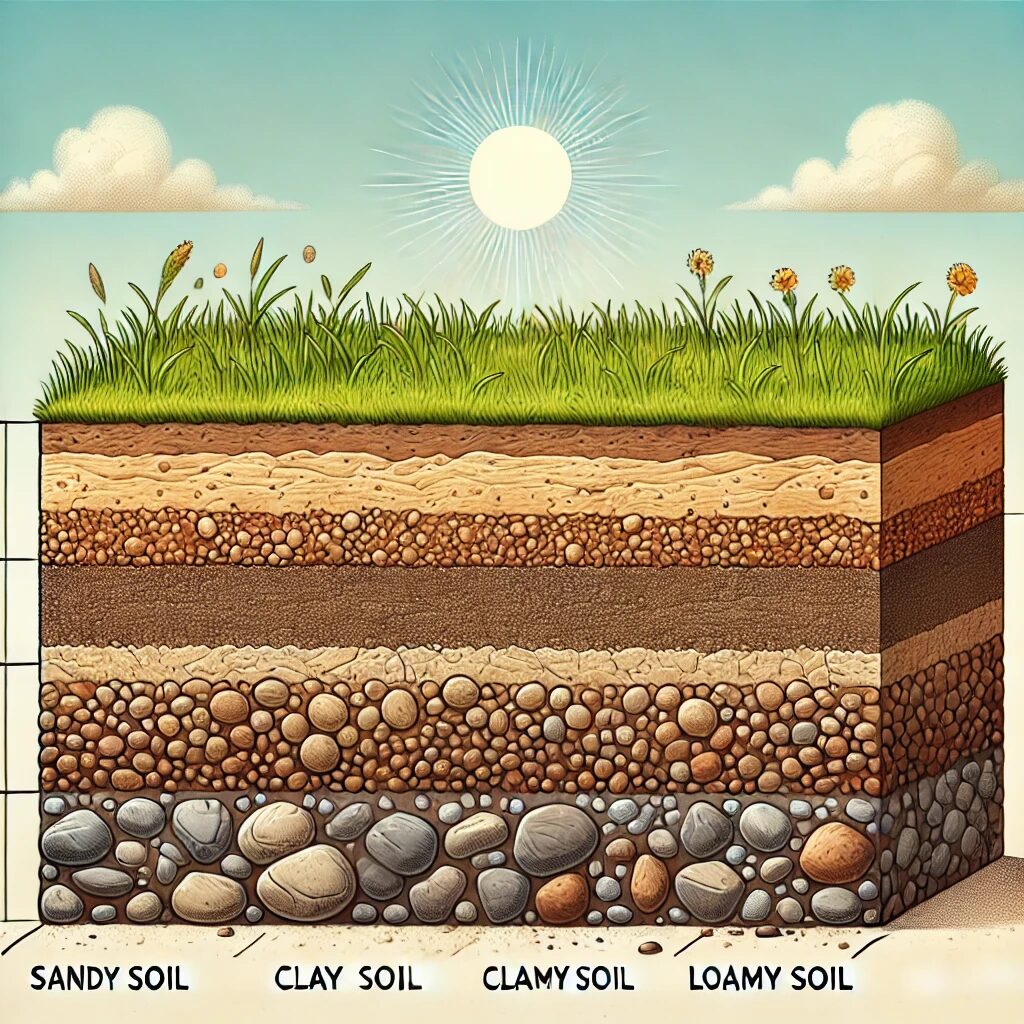
The type of soil in which you’re applying glyphosate can have a significant impact on its effectiveness. Soils vary in texture, composition, and water-holding capacity, which influences how well glyphosate can be absorbed and retained in the soil environment.
Common soil types include sandy soil, clay soil, loamy soil, and rocky soil, each of which interacts with herbicides differently.
- Sandy Soils: Known for their large particle size and low water-holding capacity, sandy soils may not retain glyphosate as effectively. Due to their loose structure, sandy soils allow glyphosate to percolate quickly, potentially reducing its contact time with weeds. In these conditions, adjusting the herbicide concentration or adding surfactants might be necessary to enhance absorption.
- Clay Soils: Clay soils are more compact and have smaller particles, which means they retain water well but may bind to herbicides like glyphosate. This binding can reduce the availability of glyphosate to target weeds, especially in cases where clay soils are also high in organic matter. Adjusting application rates or using soil conditioners might be needed to improve glyphosate’s effectiveness on clay soils.
- Loamy Soils: Loamy soils, a balanced mix of sand, silt, and clay, generally offer optimal conditions for glyphosate application. They retain moisture well while allowing adequate herbicide absorption and movement. This soil type typically provides a favorable balance for effective weed control, requiring standard application rates.
- Rocky Soils: Rocky soils, with their limited organic matter and variable composition, can pose unique challenges for herbicide application. Glyphosate may not distribute evenly in rocky soils, necessitating multiple applications or a modified spray method to ensure that weeds growing among rocks are adequately covered.
Soil type can guide you in optimizing glyphosate application rates and techniques. Soil testing and observation can provide insights into how well your soil type holds and interacts with glyphosate, helping to tailor applications for maximum weed control effectiveness.
7. Practical Tips for Mixing and Application
Measure Carefully: Always measure the exact amount of glyphosate and water based on your equipment’s capacity. For example, with a 5-gallon sprayer, you’ll need to calculate the precise number of ounces based on the recommended rate of 2 oz per gallon.
Minimize Waste: Use the correct rate per acre and avoid over-application. A general guide is 20 gallons of water per acre, but this can vary based on specific herbicide formulations and target weeds.
Maintain Equipment: Regularly clean and calibrate your sprayer to ensure accurate application. Check the spray pattern and adjust as needed for even coverage.
Apply at the Right Time: For best results, avoid applying glyphosate in extreme weather conditions. Ideally, spray in the morning or late afternoon when the temperature is within the ideal range.
Conclusion
Knowing how much glyphosate to apply per acre is essential for effective weed control and maximizing crop yields.
Optimizing glyphosate application involves carefully balancing multiple factors, each of which can significantly impact the effectiveness of weed control efforts.
Considering the type of weed, glyphosate concentration, tank capacity, environmental conditions, and equipment calibration allows for a tailored approach that enhances herbicide efficacy while minimizing waste.
A strategic approach to glyphosate application not only improves immediate weed control but also supports long-term sustainability in agriculture. consider visiting Weed Science Society of America, where you can find a wealth of information on various herbicides and best practices in agriculture.
This comprehensive method reduces the risk of resistance, lowers environmental impact, and promotes efficient resource use.
As herbicide challenges continue to evolve, an informed and adaptable approach ensures that glyphosate remains a reliable tool in the fight against invasive weeds, fostering a more resilient and sustainable agricultural system.
